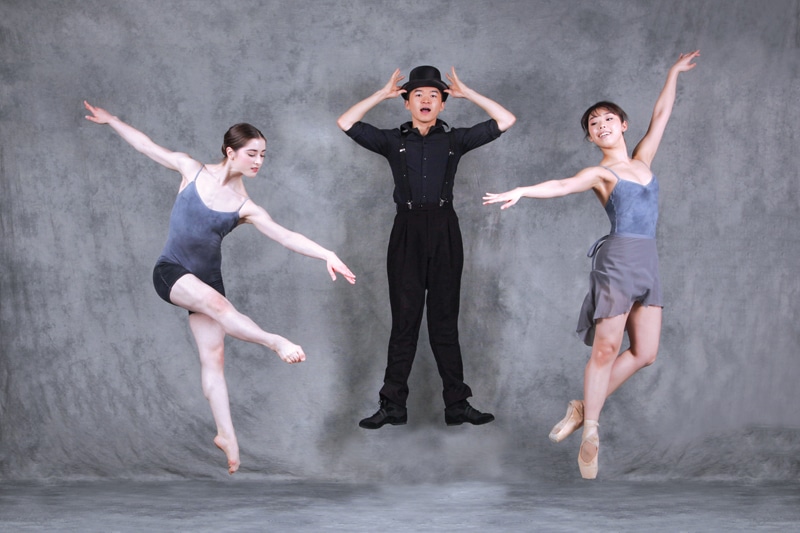
“With our dance programs, our students are allowed the space to hone their skills a bit longer in a safe space where they have the chance to try new things, possibly fail, and try again without it having ramifications on their careers.”
What is your professional background?
I am an Equity Stage Manager as well as a member of ACTRA (the Alliance of Canadian Cinema, Television and Radio Artists). Previously, before moving to Toronto and joining GBC, I ran a small theatre company in Kamloops, BC called Three Men of Sin for eight years producing 40 shows.
Could you describe your involvement with George Brown Dance and Canada’s Ballet Jörgen as Chair of Media & Performing Arts at GBC?
As Chair, I make sure that the faculty and students have the resources necessary to deliver the required outcomes of the programs, including faculty training and facilities needs, as well as making sure the CBJ staff who facilitate the programs are supported. Currently, I also represent the College on the CBJ Board of Directors.

How do you view the importance of post-secondary dance programs?
Post-secondary dance programs provide an amazing opportunity for students to further develop and apply their technical skills and self-knowledge. With our dance programs, our students are allowed the space to hone their skills a bit longer in a safe space where they have the chance to try new things, possibly fail, and try again without it having ramifications on their careers.
What stands out about the dance programs offered at George Brown?
1) We are a small school with low student numbers which allows for more personal approaches to learning as well as more one-on-one time. 2) Having faculty who are current industry people that might hire students or put in a good word for them allows for opportunities not only once they graduate but potentially even before they graduate. 3) The direct relationship with CBJ, with interactions with the dance company, allows for even more connections between professional dancers and the students. 4) The sense of family that comes with all the interconnectivity also allows the students, a number of them from different provinces, to feel comfortable from day one starting at GBC.
“Even if a student or graduate from a performing arts program does not continue in their field, they take with them professionalism, ideation, and a deeper understanding of human relations, which make for more amazing workplaces and family dynamics for a better overall society.”
What opportunities does a dance education afford?
The largest opportunity is, of course, being a well-polished dancer and being seen in auditions as a dedicated, determined professional. The other opportunity that a lot of dancers perhaps don’t realize is that they have a more heightened knowledge of how people move through space and understanding of spatial relations. A few years ago, GBD did a day workshop with Crystal Fountains Inc. and design students. The workshop was to come up with how the public could have interactions with the fountains that Crystal Fountains create. It was a great day and the dance students really helped the other students understand how we as people relate to others and objects.
How do you view the wider contributions of the performing arts?
Besides the basics of providing entertainment, education, and empowerment in the work they do, performing artists provide a wealth of creativity to all other fields. Even if a student or graduate from a performing arts program does not continue in their field, they take with them professionalism, ideation, and a deeper understanding of human relations, which make for more amazing workplaces and family dynamics for a better overall society.

What challenges do performing arts programs face in post-secondary institutions?
One challenge is confronting the lack of knowledge about what the performing arts brings to an institution as well as the greater world. There also needs to be a greater awareness of what it takes to be in a performing arts program — what people in the performing arts put their bodies and minds through to put on an amazing performance for people.
Are you optimistic about the future of dance and the arts in general?
Slowly, those that have been proponents of STEM (Science, Technology, Engineering, and Mathematics) are now starting to realize that you can’t have good STEM without the Arts, so they are starting to integrate the “A,” making it STEAM.
Is there anything you would like to add?
It is always a great pleasure when I get to go to the year end shows and watch the results of all the hard work our students put into their classes, seeing their families beam in the lobby, and knowing that we have done a good job in supporting them to go further in their careers.
Interested in George Brown Dance? Visit our website for information on GBD programs, faculty, performances, alumni success stories, and more.
Audition dates and registration information for all George Brown Dance programs can be found on our audition page.
Follow us on Facebook @balletjorgencanada to stay current on news, events and performances.
Written by Victoria Campbell Windle, CBJ Communications Contributor.
